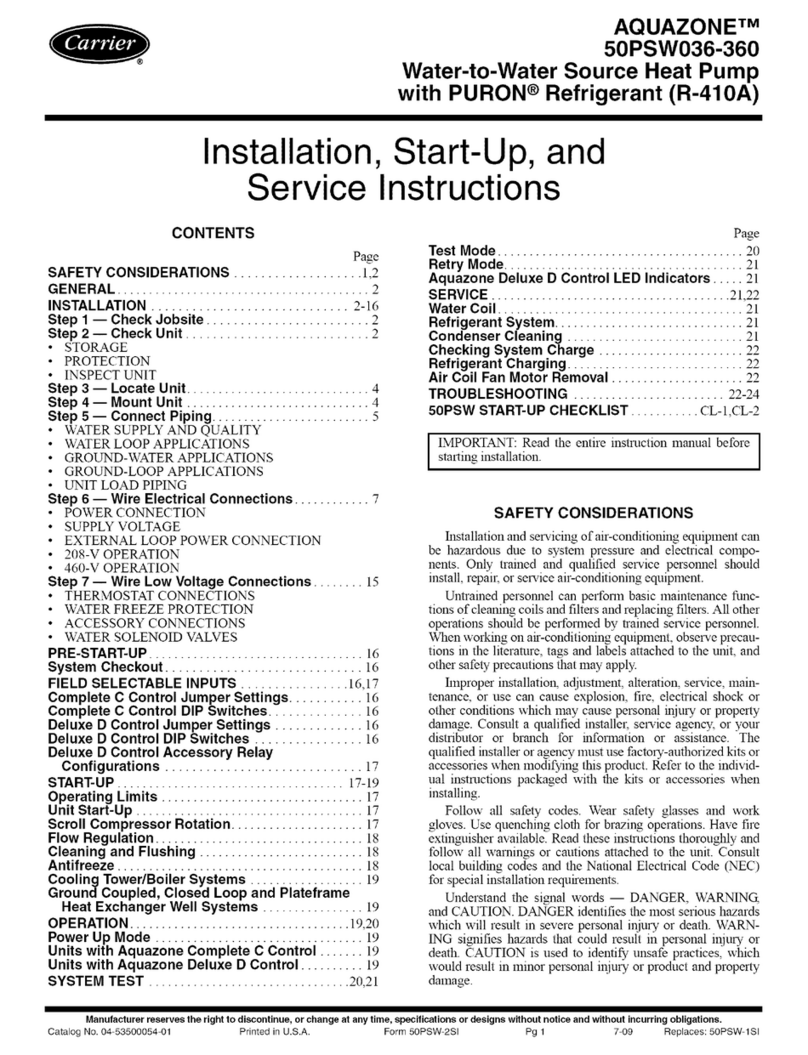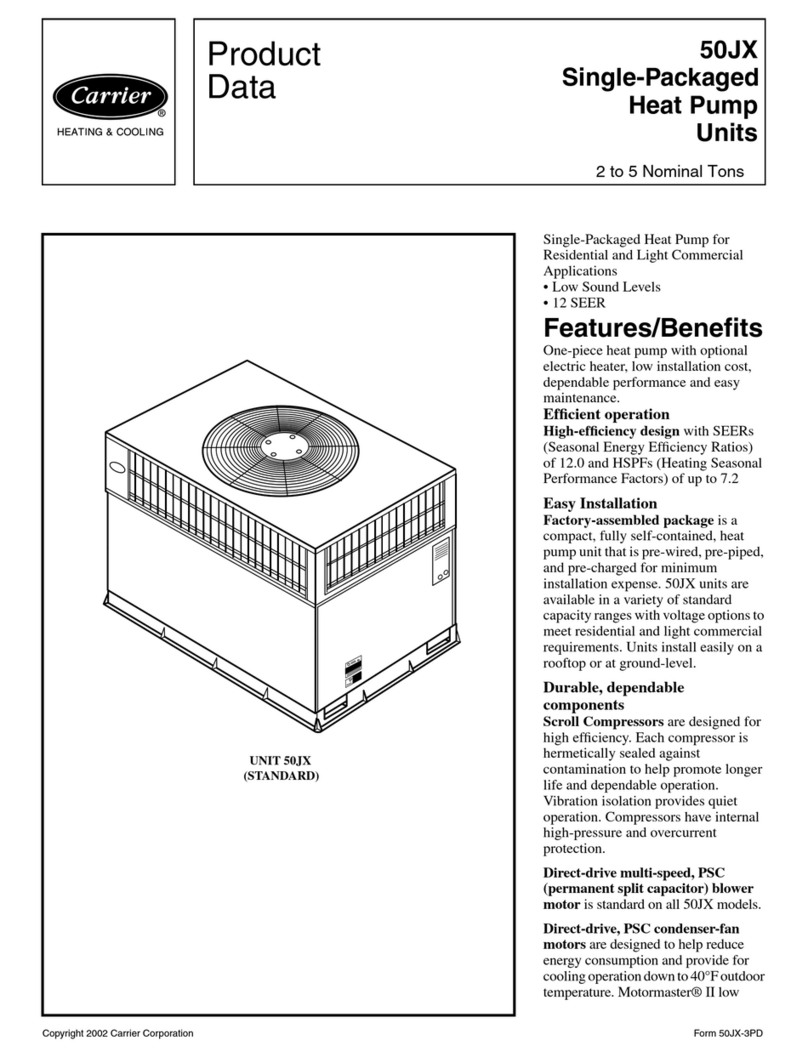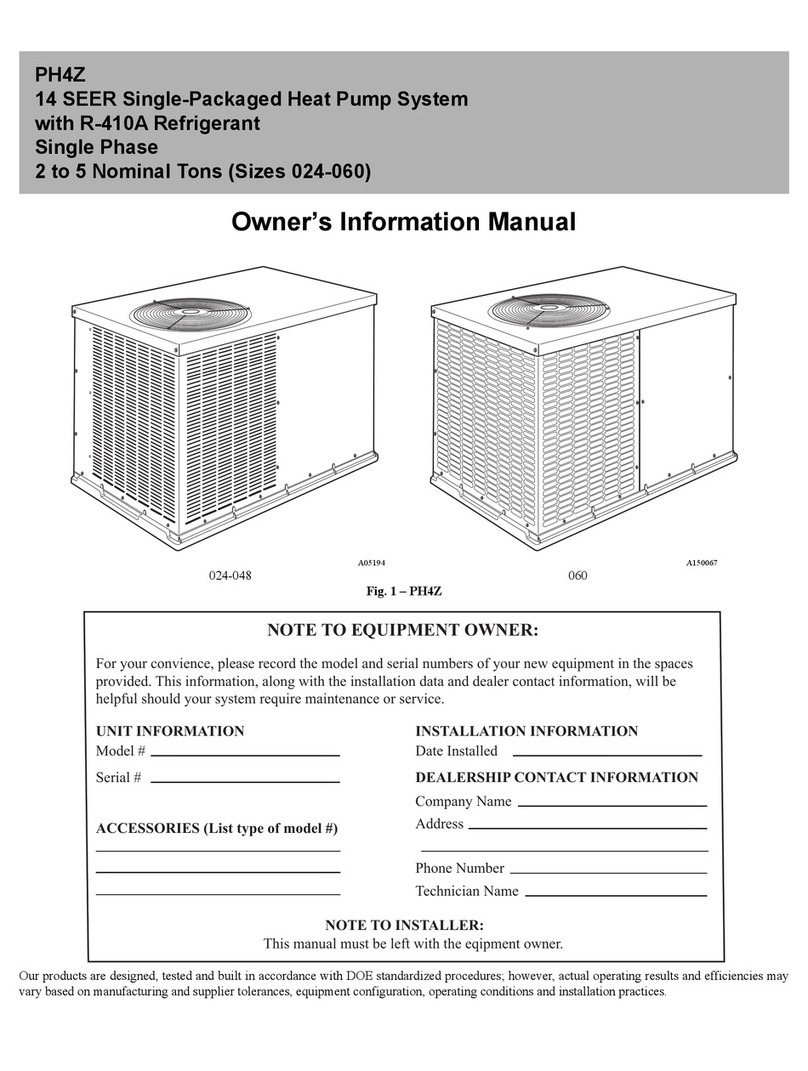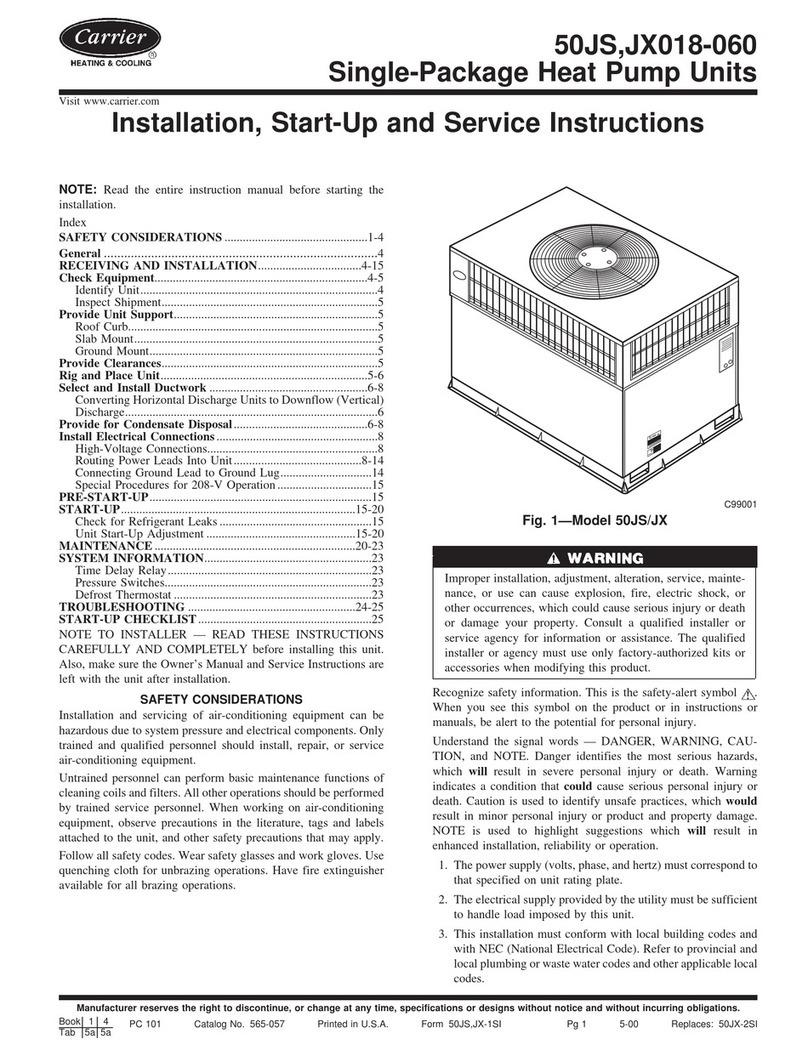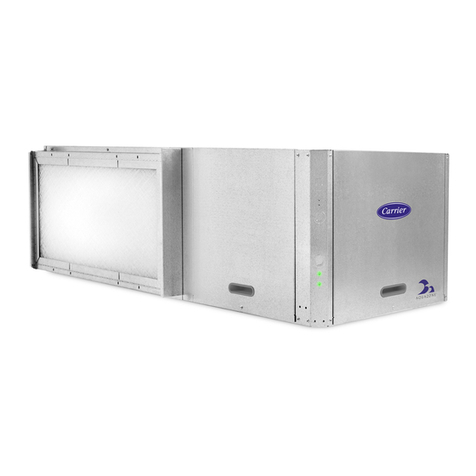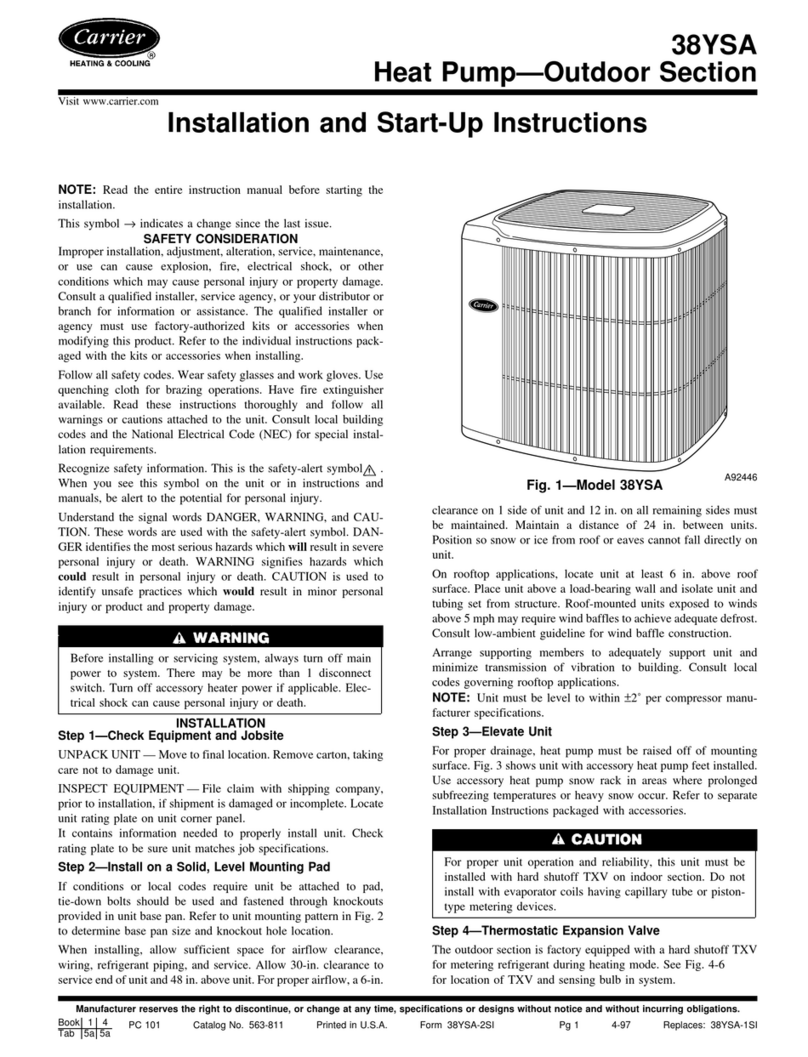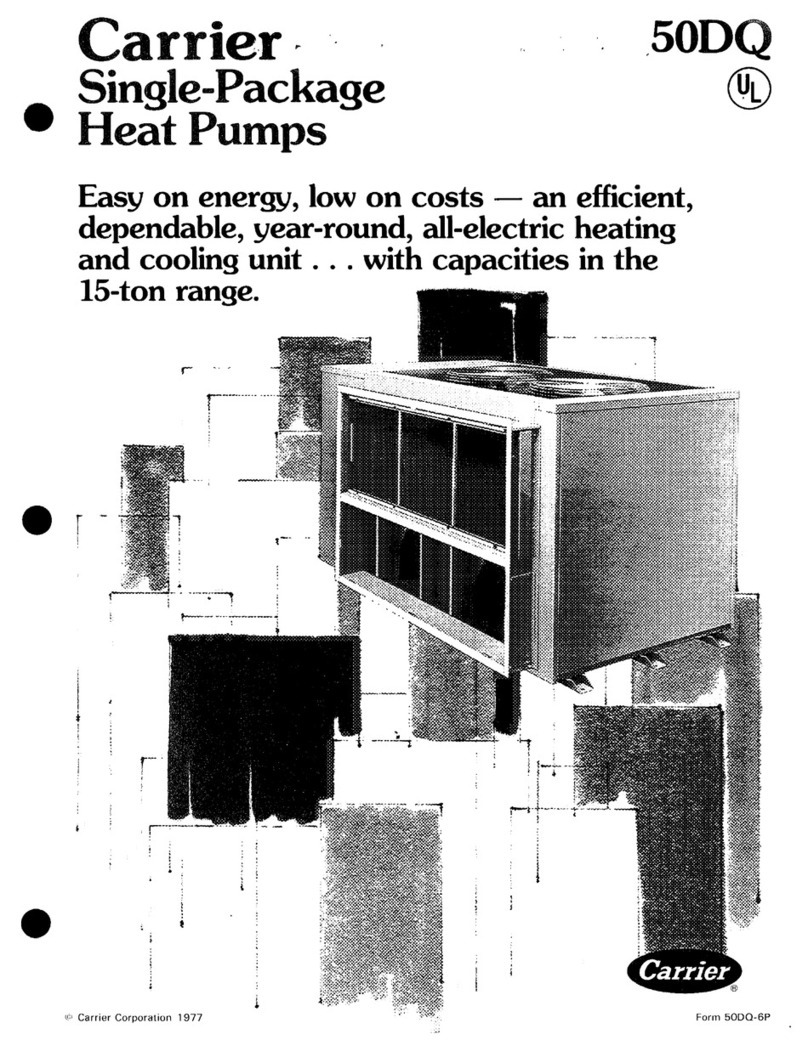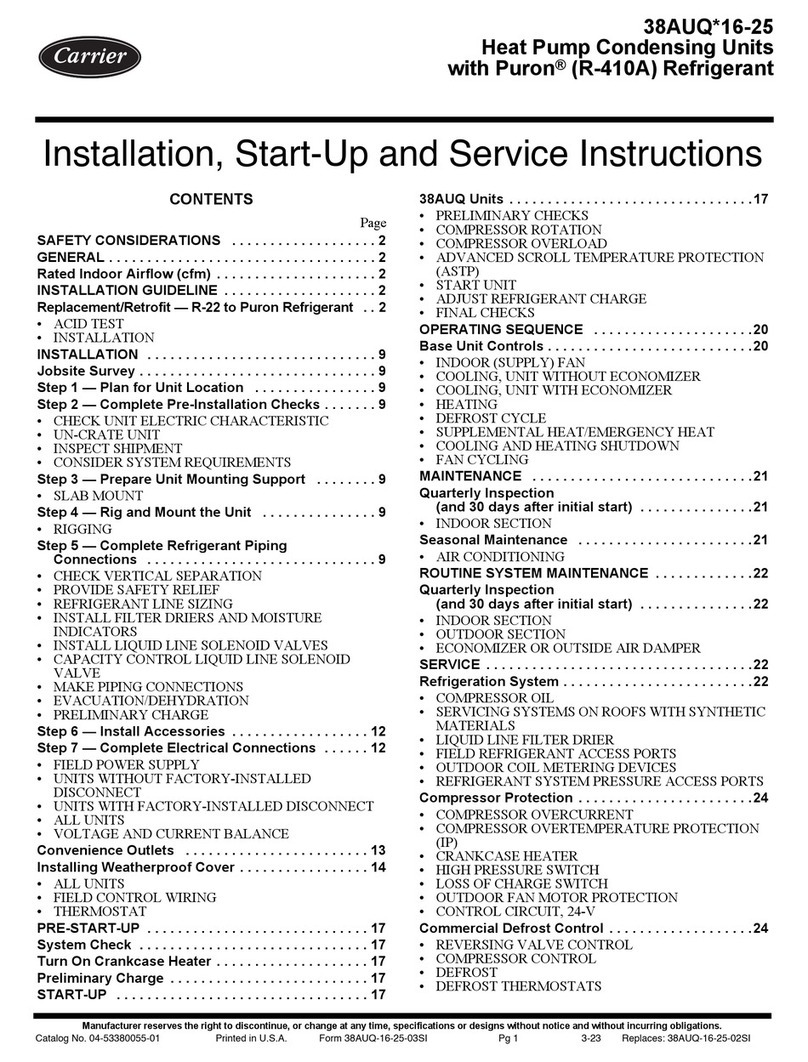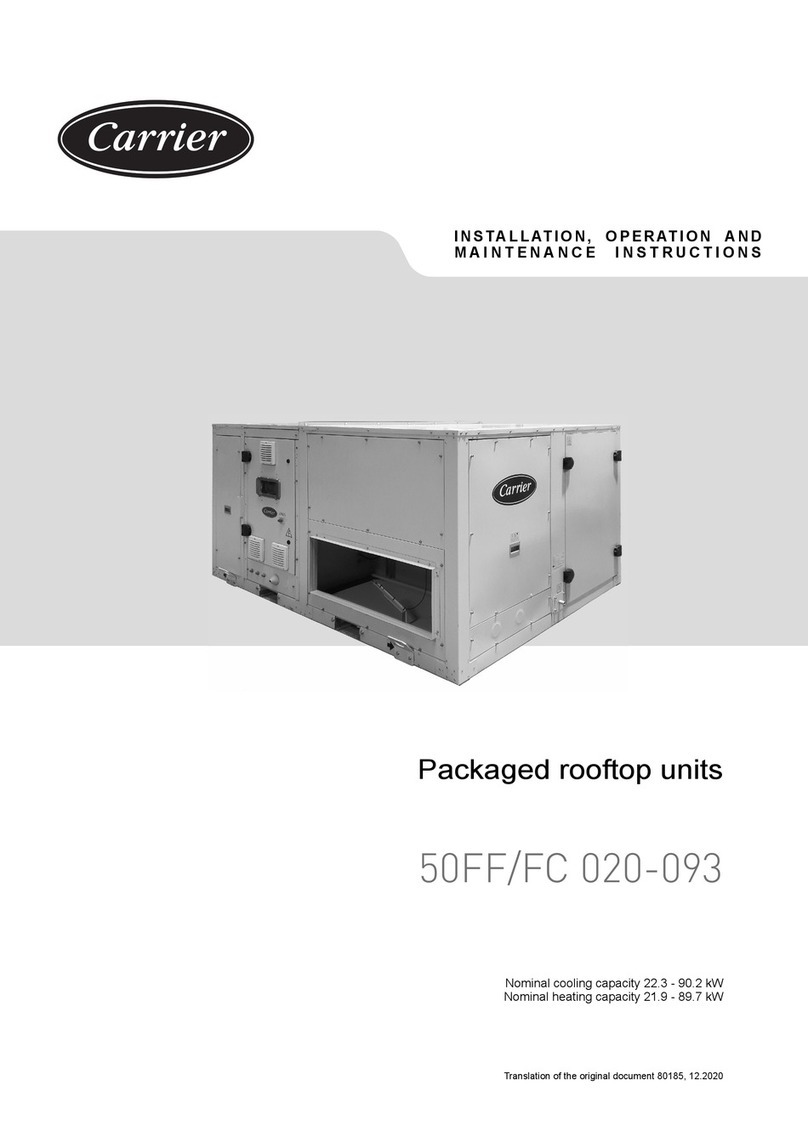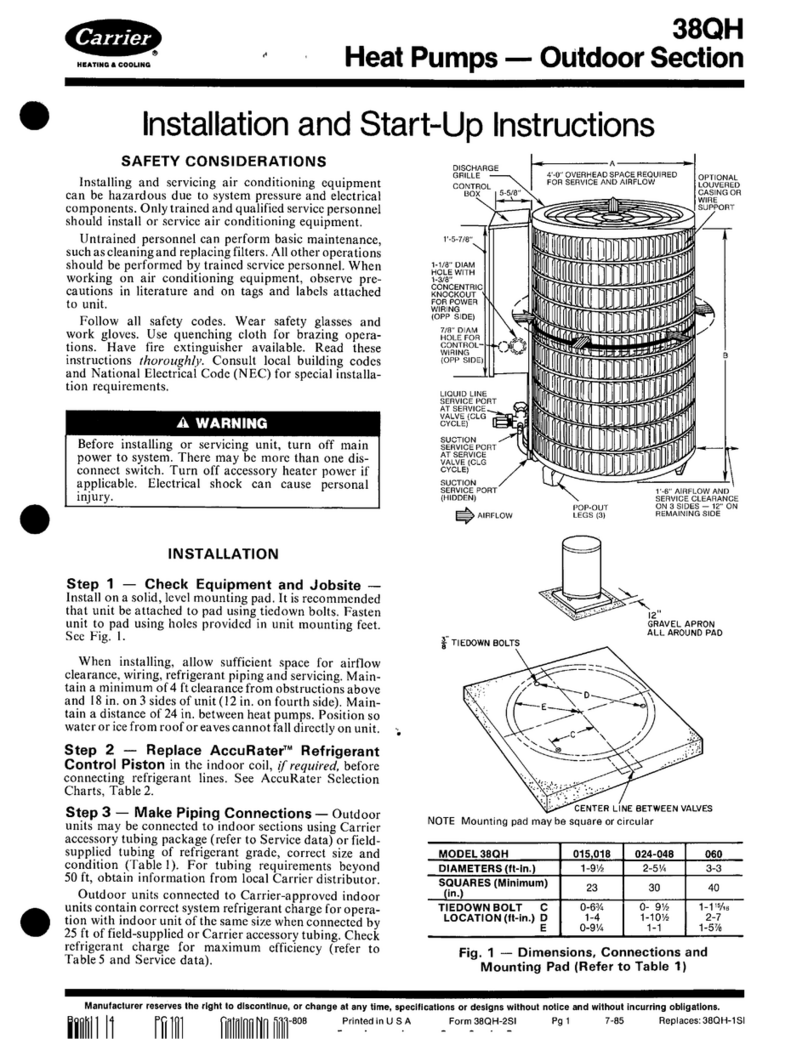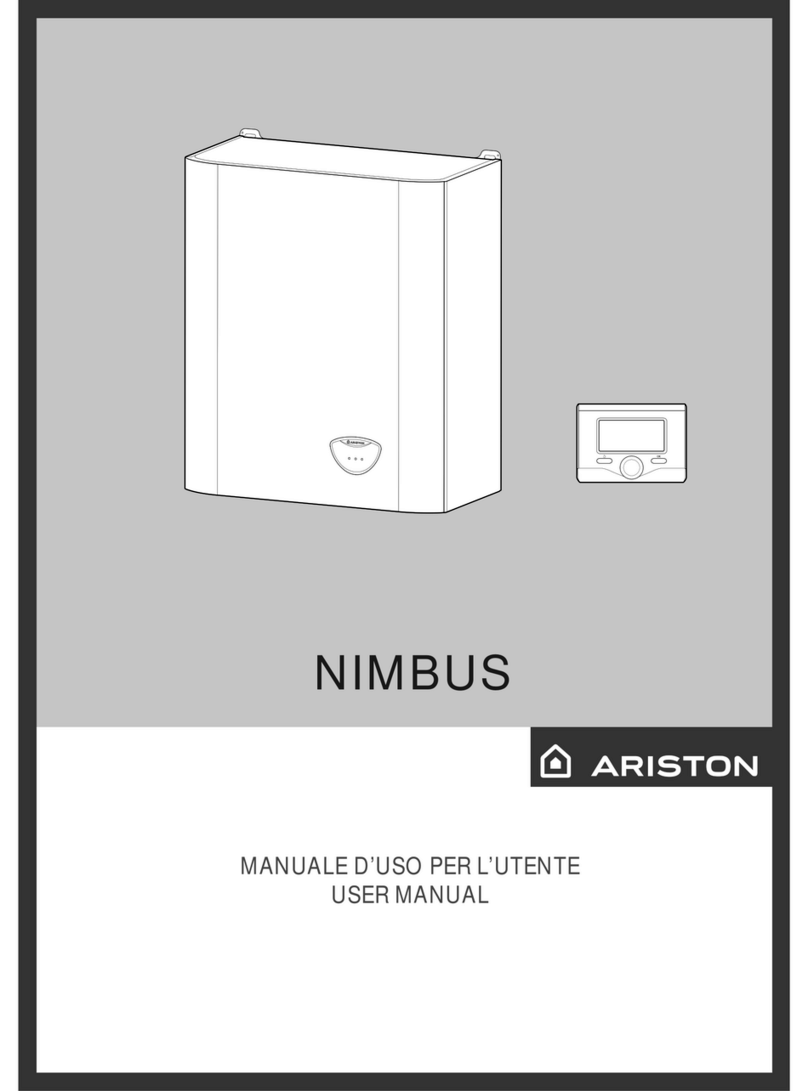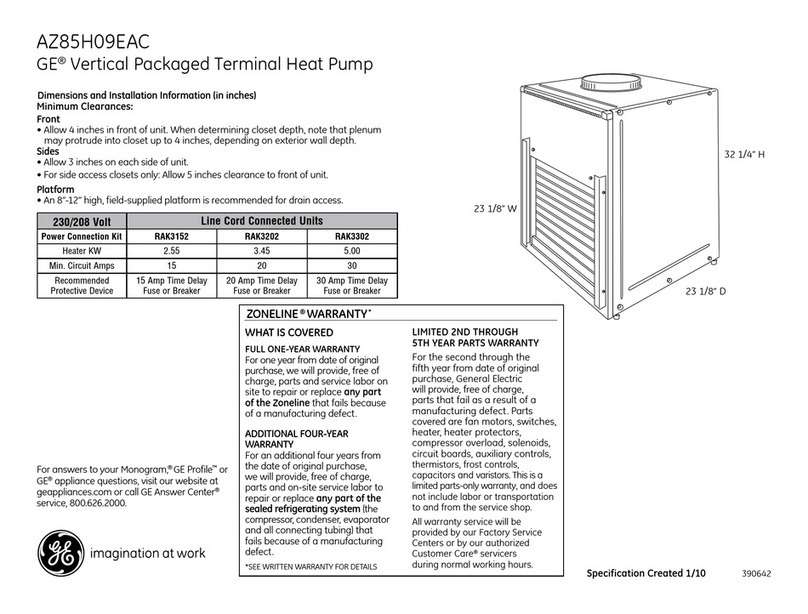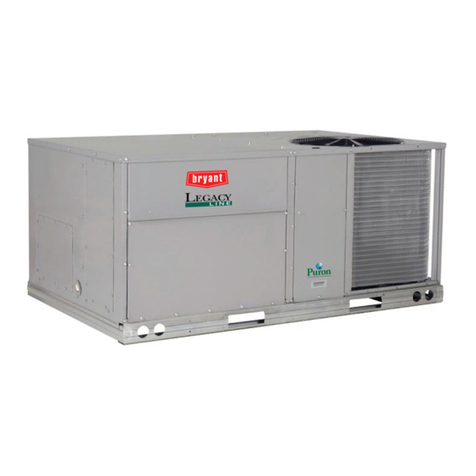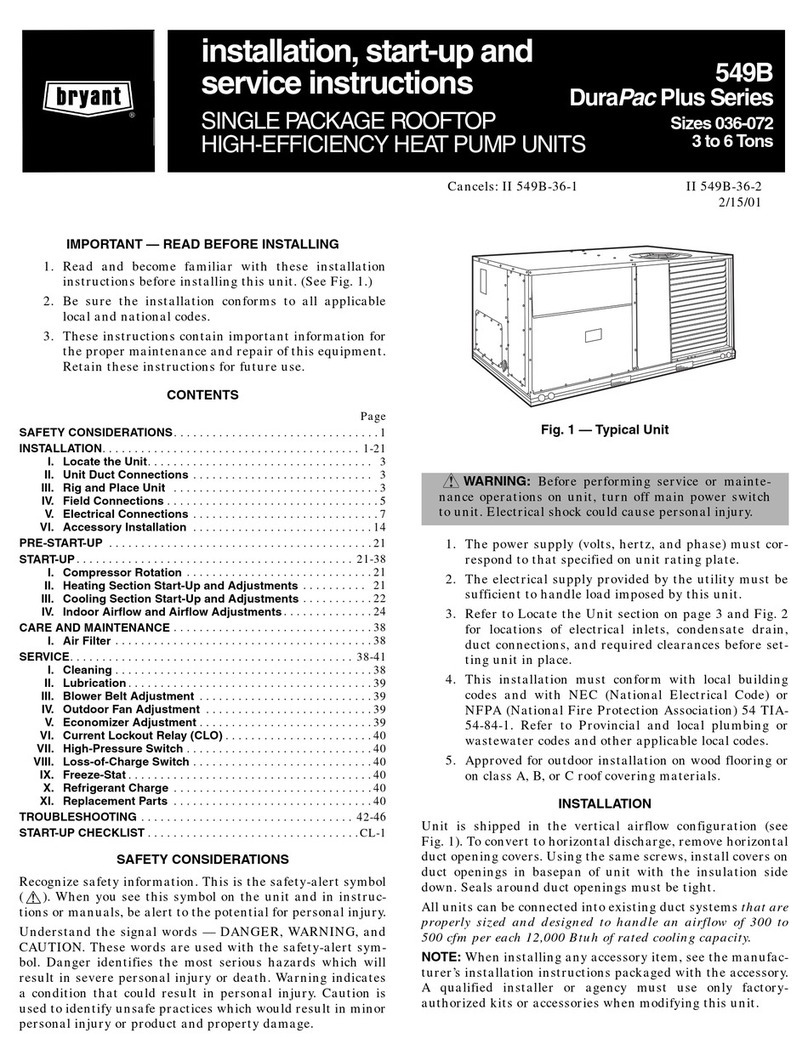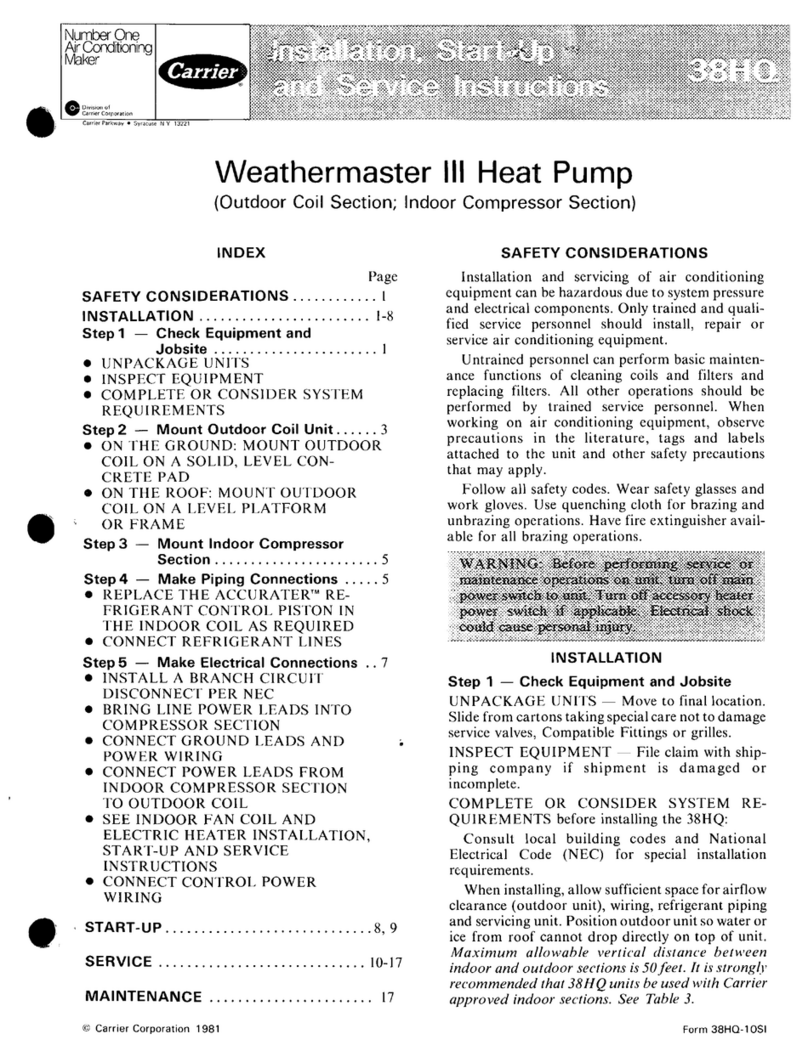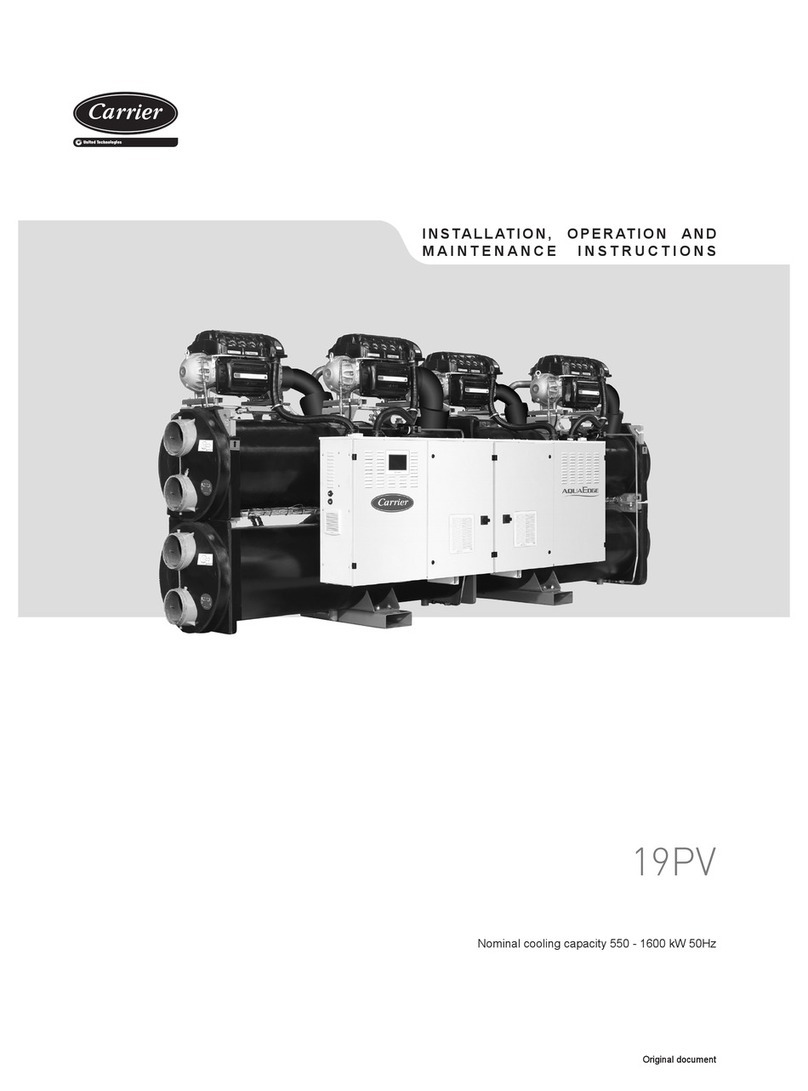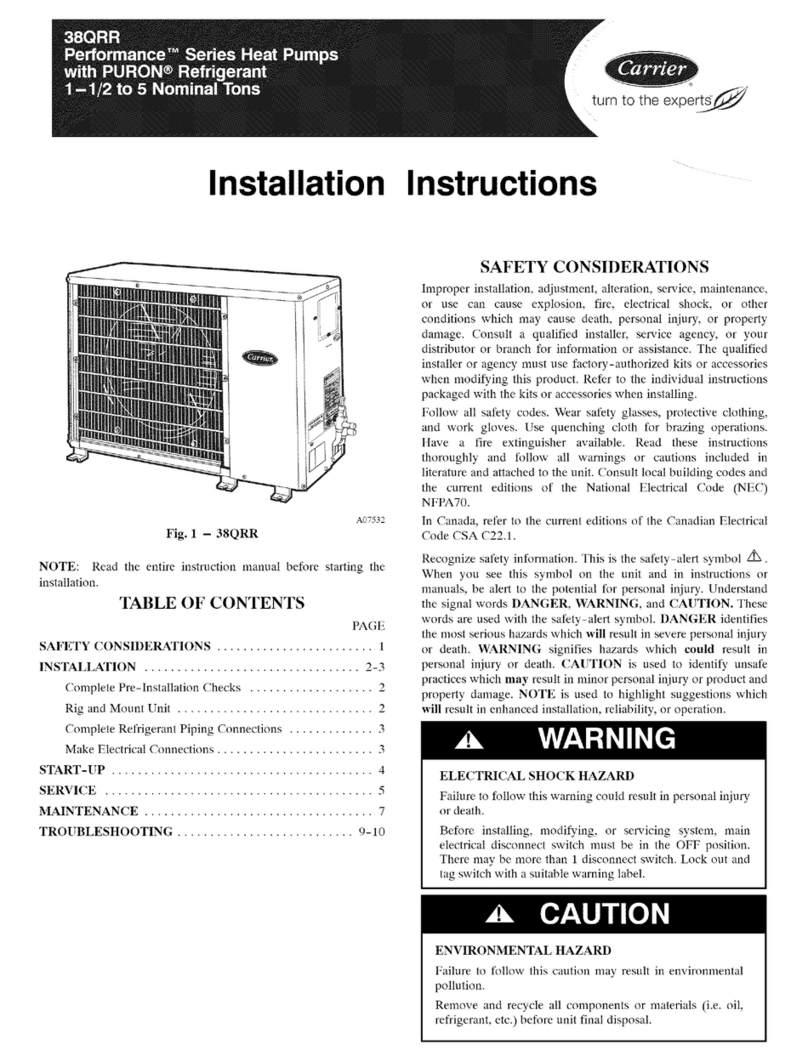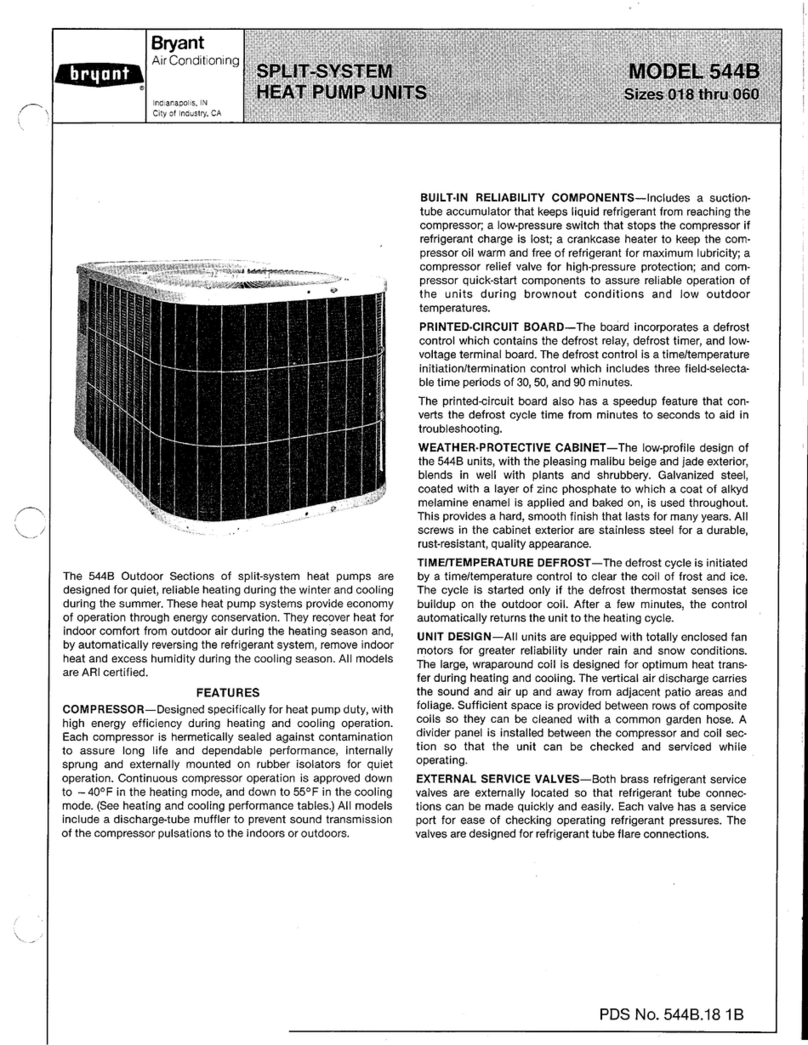
2
identifies the most serious hazards which will result in severe per-
sonal injury or death. WARNING signifies hazards which could
result in personal injury or death. CAUTION is used to identify
unsafe practices which may result in minor personal injury or
product and property damage. NOTE is used to highlight sugges-
tions which will result in enhanced installation, reliability, or op-
eration.
ELECTRICAL SHOCK HAZARD
Failure to follow this warning could result in personal
injury or death.
Before installing or servicing system, always turn off main
power to system. There may be more than one disconnect
switch. Turn off accessory heater power switch if
applicable.
!WARNING
FIRE, EXPLOSION, ELECTRICAL SHOCK AND
CARBON MONOXIDE POISONING HAZARD
Failure to follow this warning could result in personal
injury, death or property damage.
A qualified installer or agency must use only
factory--authorized kits or accessories when modifying this
product.
WARNING
!
INTRODUCTION
The 48EZ unit (see Fig. 1) is a fully self--contained, combination
Category I gas heating/electric cooling unit designed for outdoor
installation (See Fig. 2 and 3 for unit dimensions). All unit sizes
have return and discharge openings for both horizontal and
downflow configurations, and are factory shipped with all
downflow duct openings covered. Units may be installed either
on a rooftop, a cement slab, or directly on the ground, if local
codes permit (See Fig. 4 for roof curb dimensions).
Models with an N in the fifth position of the model number are
dedicated Low NOx units designed for California installations.
These models meet the California maximum oxides of nitrogen
(NOx) emissions requirements of 40 nanograms/joule or less as
shipped from the factory and must be installed in California Air
Quality Management Districts or any other regions in North
America where a Low NOx rule exists.
RECEIVING AND INSTALLATION
Step 1 — Check Equipment
IDENTIFY UNIT
The unit model number and serial number are stamped on the
unit information plate. Check this information against shipping
papers.
INSPECT SHIPMENT
Inspect for shipping damage while unit is still on shipping pallet.
If unit appears to be damaged or is torn loose from its anchorage,
have it examined by transportation inspectors before removal.
Forward claim papers directly to transportation company.
Manufacturer is not responsible for any damage incurred in
transit. Check all items against shipping list. Immediately notify
the nearest equipment distribution office if any item is missing.
To prevent loss or damage, leave all parts in original packages
until installation.
Step 2 — Provide Unit Support
For hurricane tie downs, contact distributor for details and PE
(Professional Engineering) Certificate if required.
ROOF CURB
Install accessory roof curb in accordance with instructions
shipped with curb (See Fig. 4). Install insulation, cant strips,
roofing, and flashing. Ductwork must be attached to curb.
IMPORTANT: The gasketing of the unit to the roof curb is
critical for a water tight seal. Install gasketing material supplied
with the roof curb. Improperly applied gasketing also can result
in air leaks and poor unit performance.
Curb should be level to within 1/4 in. (6 mm). This is necessary
for unit drain to function properly. Refer to accessory roof curb
installation instructions for additional information as required.
SLAB MOUNT
Place the unit on a solid, level concrete pad that is a minimum of
4 in.(102 mm) thick with 2 in. (51 mm)above grade. The slab
should be flush on the compressor end of the unit (to allow
condensate drain installation) and should extend 2 in. (51 mm)on
the three remaining sides of the unit. Do not secure the unit to the
slab except when required by local codes.
GROUND MOUNT
The unit may be installed either on a slab or placed directly on the
ground, if local codes permit. Place the unit on level ground
prepared with gravel for condensate discharge.
Step 3 — Field Fabricate Ductwork
Secure all ducts to roof curb and building structure on vertical
discharge units. Do not connect ductwork to unit. For horizontal
applications, unit is provided with flanges on the horizontal
openings. All ductwork should be secured to the flanges. Insulate
and weatherproof all external ductwork, joints, and roof openings
with counter flashing and mastic in accordance with applicable
codes.
Ducts passing through an unconditioned space must be insulated
and covered with a vapor barrier.
If a plenum return is used on a vertical unit, the return should be
ducted through the roof deck to comply with applicable fire
codes.
A minimum clearance is not required around ductwork. Cabinet
return--air static shall not exceed --.25 in. wc.
Step 4 — Provide Clearances
The required minimum operating and service clearances are
shown in Fig. 2 and 3. Adequate combustion, ventilation and
condenser air must be provided in accordance with section 5.3,
Air for Combustion and Ventilation, of the National Fuel Gas
Code ANSI (American National Standards Institute) Z223.1 or
applicable provisions of local building code. In Canada, follow
sections 7.2, 7.3, or 7.4 or Can/CGA (Canadian Gas Association)
B149 Installation Codes or applicable provisions of local
building code.
IMPORTANT: Do not restrict outdoor airflow. An air restriction
at either the outdoor--air inlet or the fan discharge may be
detrimental to compressor life.
The condenser fan pulls air through the condenser coil and
discharges it through the top grille. Be sure that the fan discharge
does not recirculate to the condenser coil. Do not locate the unit
in either a corner or under an overhead obstruction. The
minimum clearance under a partial overhang (such as a normal
house overhang) is 48--in. (1219 mm) above the unit top. The
maximum horizontal extension of a partial overhang must not
exceed 48--in. (1219 mm).
Do not place the unit where water, ice, or snow from an overhang
or roof will damage or flood the unit. Do not install the unit on
carpeting or other combustible materials. The unit may be
installed on wood flooring or on Class A, B, or C roof covering
materials.
48EZ


